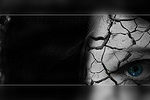Bifocal Lenses in Nearsighted Kids (BLINK) Study Begins
The National Institutes of Health awarded the University of Houston College of Optometry and the Ohio State University College of Optometry $7.5 million to study the use of soft bifocal contact lenses in the prevention of nearsightedness (myopia) in children. The Bifocal Lenses in Nearsighted Kids (BLINK) Study will follow 300 children, ages 7 to 11 years of age over a period of 3 years. The Ohio State University College of Optometry previously published the Corneal Reshaping and Myopia Study in a 2009 issue of the British Journal of Ophthalmology where it found that orthokeratology lenses were effective in preventing the lengthening of the eyeball in children which in turn slowed the progression of nearsightedness.
Myopia Regulation Treatment at Total Eye Care
Do you have a family history of nearsightedness? Are your kids nearsighted? Would you like to prevent the progression of myopia in your kids? Summer is a great time start Myopia Regulation Treatment. If you would like more details you can set up a free consult with Dr. Driscoll.
More information about orthokeratology can be found at the OrthoKDoctor.com website.








 Pink eye is a descriptive term indicating that the eye is inflamed for some reason. Not all pink eyes are infected or contagious. “Pink” eye is usually caused by a virus (often quite contagious), allergies, or bacteria. The most common cause of pink eye is a viral infection or allergies. Patients with pink eye should not wear contact lenses.
Pink eye is a descriptive term indicating that the eye is inflamed for some reason. Not all pink eyes are infected or contagious. “Pink” eye is usually caused by a virus (often quite contagious), allergies, or bacteria. The most common cause of pink eye is a viral infection or allergies. Patients with pink eye should not wear contact lenses.